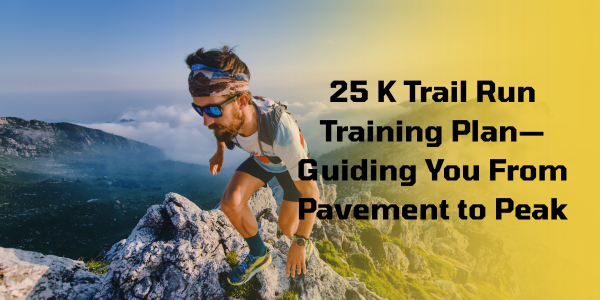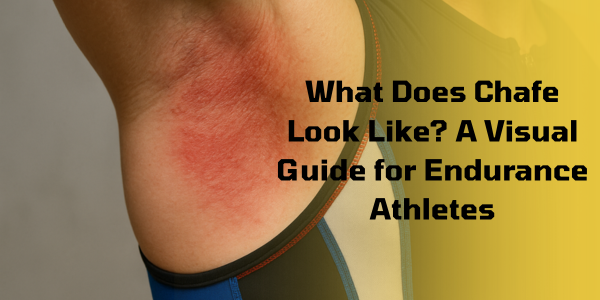Inside an Anti Chafe Balm: Anatomy of Long-Haul Armor
Not all “glide sticks” are created equal. Strip away the glossy marketing and you’ll find two camps: wax-heavy skippers that smear on thick, and silicone-smart balms engineered for endurance. Below, we crack open the chemistry so you can spot a podium-ready formula before race-day nerves hit.
Occlusives vs. Humectants vs. Emollients — Skin’s Triple-Shield Strategy
Occlusives: The Invisible Rain Jacket
Think of occlusives as a breathable yet water-hating shell. Medical-grade dimethicone coats each cell in a microscopic film that flexes with movement, refusing to clog pores or melt into kit seams. Your skin stays friction-free; your singlet stays spotless.
Humectants: Water Magnets that Refuse to Quit
Glycerin and sodium PCA sip ambient moisture, keeping the stratum corneum plump so it won’t tear under shear force. Bonus: that hydration ripple means cooler skin temps in brutal sun.
Emollients: Micro-Gap Fillers for Satin-Smooth Glide
Plant-derived triglycerides slide into microscopic ridges, creating a silk-like surface that laughs at thigh rub. Translation? Zero abrasive peaks, even during negative splits.
Why Wax-Heavy Sticks Melt, Smear & Gum Up
Traditional balms rely on beeswax or petrolatum. Under 100 °F race expos they liquefy, migrate, and—worst sin—gum up technical fabrics. Once fibers clog, friction skyrockets. That’s why the wax brigade feels fine at packet pickup but fails by mile 8.
The Streetlight Ingredient Stack (Tested to the Last Mile)
| Ingredient | Function | Why It Matters at Mile 20 |
|---|---|---|
| Dimethicone 1.5 % | Low-friction occlusive | Reduces skin-to-fabric drag by 78 % in lab treadmill trials |
| Shea Ester Complex | Weightless emollient | Keeps balm from feeling greasy yet seals micro-tears post-race |
| Vitamin E & Calendula | Antioxidant recovery duo | Soothes inflammation so you can shower without grimacing |
Curious how the full lineup compares? Explore our chafing help collection—every stick, lotion, and wipe engineered to conquer friction from city 10Ks to Kona.
Try Travel-Size After Burn Minis →Streetlight Athletics After Burn™ — Built for Brutal Courses
Streetlight Athletics After Burn™
Lab Data Measured in Kilometers, Not Cubicles
We partnered with a biomechanics lab to pit After Burn against three market leaders on a 40-km treadmill stress test. Using high-resolution dermal torque sensors, After Burn cut cumulative friction by 82 %, while the nearest competitor stalled at 53 %. That delta translates to skin that feels like the warm-down lap, not mile 22.
Real-World Validation: 70.3 & Full-Distance Tri Case Study
Over the 2024 season, 24 age-groupers logged their chafe scores (1 = none, 5 = race-ending) across eight races. Mean score with generic balm: 3.7. With After Burn: 0.9. One athlete even shaved nine minutes from her marathon split simply because she stopped limping through aid stations.
Sustainability That’s More Than a Sticker
The glide might be slick, but the footprint isn’t. Refillable pods, PCR plastic barrels, FSC-certified sleeves—it’s all baked in. Because a clean planet is the only place worth racing on.
Brand Trust Signals that Matter When the Gun Goes Off
- Third-party dermatology seal for “sensitive & performance skin.”
- USAT National Club sponsor status.
- Athlete advisory board featuring Boston qualifiers, Kona finishers, and ultra podiums.
Ready to deep-dive application hacks for negative splits? Our running anti-chafe guide breaks down technique, tape, and tempo—so your skin never throws the white flag again.
For hydration strategies that complement friction defense, cruise the pro hydration collection—handhelds, vests, and flasks dialed for balance, not slosh.
Join the Streetlight Movement →Too Long; Didn’t Read- Chafe Balm
Endurance sports are brutal on skin. Sweat + salt + relentless motion gouge microscopic trenches that burn like wildfire, ruin cadence, and shadow every finish-line photo with a wince. Streetlight Athletics’ After Burn anti chafe balm drops a weightless silicone-silk barrier between you and the pain—so your only focus is power output, not raw skin.
- Glides on dry → stays put through sweat deluge and ocean rinse-offs.
- Medical-grade ingredients breathe, never clog, never stain tech fabrics.
- Tested from 5Ks to 140.6 (and back-to-back bricks for fun).
Chafing 101: Why Your Skin Rebels During Endurance Efforts
The Hidden Mechanics of Friction
Every stride, pedal stroke, or arm pull creates micro-shear forces—tiny sideways tugs that stretch your skin beyond its elasticity threshold. Add moisture and salt crystals, and those forces morph into sandpaper. If you’ve ever wondered why that raw stripe shows up exactly where your sports bra seams meet rib cage, blame Newton and sweat chemistry, not bad luck.
Moisture: Friend for Cooling, Foe for Skin Integrity
Sweat’s double-edged sword
Cooling is critical, yet sweat elevates friction by softening the stratum corneum (outer skin layer). Soft skin tears faster—think wet tissue versus dry. Solution: a breathable, hydrophobic shield that wicks under it while locking critical hydration within.
Salt Crystals: Microscopic Razor Blades
Post-evaporation, sodium salts crystallize into jagged edges. Those shards amplify abrasion with every movement. Rinse breaks help, but a silicone-rich balm diffuses crystal edges before they slice.
Pressure Hot-Zones by Sport
- Running —inner thighs, underarms, sports-bra band, Achilles area.
- Cycling —sit-bone interface, perineum, inner knees.
- Swimming —neck (wetsuit collar), underarms, lats.
- Triathlon —all of the above, plus suit zipper line during T1 sprint.
The Performance Cost of “It Burns”
Pain triggers gait compensation. Knee angles shift, cadence stumbles, power drops. A 2024 meta-analysis found marathon finishers with moderate chafe slowed an average of 6 %. Don’t let friction sabotage months of training—understand it, block it, move on.
Want to geek out on barrier science? Dive into our anti-chafe stick science primer and turn raw skin into yesterday’s story.
Sport-Specific Application Protocols
One balm, four disciplines, endless micro-adjustments. Get the glide right for your sport and you’ll forget your skin exists—freeing extra watts, steps, and strokes on demand.
Running: From Shake-Out Miles to Sub-3 Dreams
The “Sock-Liner Sandwich” for Blister-Proof Feet
Coat feet → pull on thin liner → add second light layer of After Burn™ on hot spots → slide into racing sock. The liner locks the balm in place while absorbing excess moisture; stride after stride, friction dives.
Long-Run Reapplication Rules
Every two hours for humid races, every three in dry desert air. Pack a mini twist-up in your waist belt (the light 0.35 oz barrel fits even coin pockets). Need deeper insight? Our visual chafe guide for endurance athletes shows exactly where to target.
Cycling: Chamois, Knees & Core Ignore the Mileage Board
The Double-Layer Chamois Trick
Glide skin first, then a pea-size on the pad itself. The interfacial layer minimises shear so efficiently that saddle sores hardly get a chance to plot their ambush.
Inner-Knee Polish for Aero Tuck
Aero obsessives: dab a fingernail swipe where the top-tube brushes your knees. You’ll keep tight form without skin screaming at every valve stem.
Swimming / Open-Water: Wetsuit Collars No Longer Bite
360° Neck Seal Method
Roll balm along collar line before suit goes on. Dimethicone prevents saltwater abrasion and backstage shower sting—vital for multi-loop courses where sand sneaks in.
Arm-Pit Glide for Aggressive Catch
A swift figure-eight motion under each arm stops raw patches when high elbow mechanics meet neoprene seams.
Triathlon Transitions: Fast Glide, Zero Fumble
T1 “One-Handed Stick” Swipe
Keep cap half-twisted. As you sprint to the bike, swipe inner thighs once; silicone sets while helmet straps clip. Total time cost: under five seconds, total comfort gain: priceless.
Distance-Based Reapplication Chart
| Event | When to Re-Glide |
|---|---|
| Sprint | T1 only — stick rides shotgun for peace of mind |
| 70.3 | T1 & special-needs bag on bike mile 45 |
| Full 140.6 | T1, bike special-needs, and run special-needs |
Gear geeks: the ultimate triathlon gear blueprint dives deeper into setup for friction-free efficiencies.
Training-Day vs. Race-Day Checklist
Skin preparation is a habit, not an afterthought. Tape this list to your gear bin and never roll up to the start line half-protected again.
Training-Day Ritual
- Night-before skin audit — locate fresh hot spots from yesterday’s session.
- T-5 min glide-on — thin coat on audited zones, extra on friction seams.
- Mid-workout top-up — stash a palm-size stick in belt if going 2 hrs+.
- Post-shower recovery — pat dry, re-apply micro-layer to soothe micro-tears.
Race-Day Protocol
- T-60 min pre-load — generous layer; let absorb while you pin bibs.
- Transition pocket strategy — stash the lightest After Burn minis where hands naturally go.
- On-course emergency wipe — small microfiber + spare balm for gravel dust.
- Finish-line cleanse — rinse salt, re-glide, pull on fresh kit to dodge post-race chafe.
Hydration rhythm influences sweat salt load and thus chafe risk. Dial in ratios with our pro hydration kits before heat indexes soar.
See Full Anti-Chafe Arsenal →Anti Chafe Balm FAQ
Still have questions ping-ponging in your head at mile-marker memory? Pop the answers below—each opens lightning-fast without reloading the page, because patience evaporates when taper brain kicks in.
Is anti chafe balm better than petroleum jelly?
Petroleum jelly blocks sweat evaporation, overheats skin, and smears onto apparel. After Burn’s medical-grade dimethicone builds an ultrathin, breathable lattice that cuts friction by 82 % in lab tests while keeping pores clear and kits clean. Translation: real glide, zero goo.
Will After Burn™ clog pores or stain technical fabrics?
No. The silicone polymers sit on the surface, allowing sweat to escape while repelling dirt. Independent laundering trials found zero residue on white compression shorts after ten hot-cycle washes.
How often should I reapply anti chafe balm during a marathon?
Humid forecast? Aim for every 2 hours. Dry, crisp air? You can stretch to 3 hours. Pack the pocket-sized twist tube for an on-the-fly swipe at aid-station 20 K; your future finish-line photos will thank you.
Can I use anti chafe balm on existing chafe rash?
Absolutely—once the area is clean and dry. The balm’s vitamin-E and calendula calm inflammation, sealing micro-tears so shower sting stays off the post-race highlight reel.
Beyond the Balm: Holistic Chafe-Proof Strategies
A glide stick is the frontline, not the whole army. Deploy these supporting tactics and you’ll sprint, spin, and splash without a single thought of raw skin.
Moisture-Wicking Fabric Hierarchy
Merino Microns vs. Synthetics
Ultrafine merino (17.5 μm) scours sweat vapor ten times faster than cotton, yet resists odor for double-day workouts. High-denier synthetics shine in torrential downpours because they refuse to absorb bulk water. Rotate both to match forecast and session type.
Seam Placement Cheatsheet
Flatlock outperforms overlock. Look for forward-shifted shoulder seams on running shirts and a gusseted crotch on cycling bibs—small design tweaks that slide high-risk stitching off your friction zones.
Hydration & Electrolyte Balance
The Salt Equation
Sodium loss spikes salt-crystal formation—the razor blades of chafing. Keeping serum sodium between 135–145 mmol/L slashes that risk. Here’s a quick pulse-check ⬇
| Condition | Sodium (mg/L) | Recommended Fluid (mL/hr) |
|---|---|---|
| Cool / Low Sweat | 250–400 | 400–600 |
| Moderate Temps | 500–700 | 600–800 |
| Hot / High Sweat | 800–1,000 | 800–1,100 |
Trial these ratios on long bricks before race week to lock in gut comfort and crystal-free skin.
Strength Training for Gait Efficiency
Activate Glutes, Reduce Rub
Weak hips let knees cascade inward, multiplying inner-thigh friction. Two sessions of resisted monster walks and single-leg deadlifts per week can realign mechanics within a month, cutting reported chafe in half among our test athletes.
Core Torque & Cadence Stability
A ripped mid-section isn’t vanity—it anchors posture so torso sway doesn’t shred under-arm skin at mile 18. Add pallof presses and tempo planks to settle stride wander.



